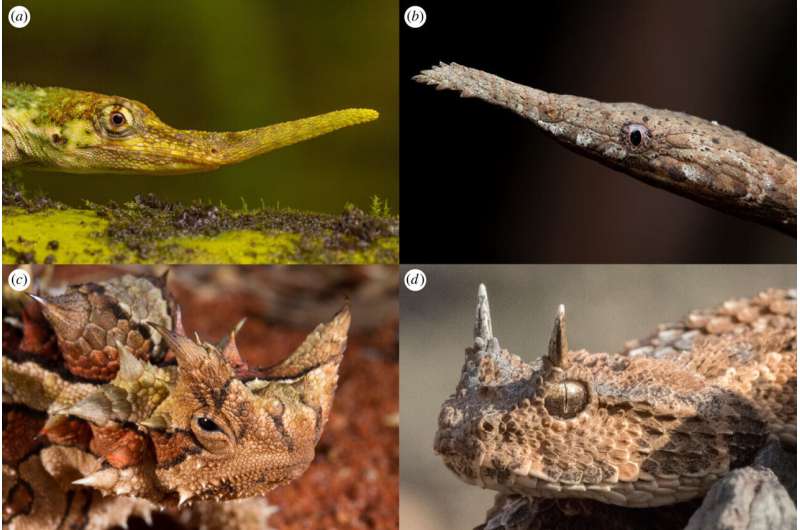December 14, 2023 report
This article has been reviewed according to Science X's editorial process and policies. Editors have highlighted the following attributes while ensuring the content's credibility:
fact-checked
peer-reviewed publication
trusted source
proofread
Squamates with horns more likely to take 'sit-and-wait' approach to hunting

An international research collaborative has found evidence showing that squamates (lizards and snakes) with horns are more likely to take a "sit-and-wait" approach to hunting than those without horns. In their project, reported in the journal Biology Letters, the group studied nearly 2,000 species of lizards and snakes.
Prior research has shown that many squamates have some form of horns. Whether on the top of the head, over the eyebrows or on the snout, such horns tend to give the creatures an aggressive appearance. And ultimately, that may be their purpose.
But in this new study, the researchers noted that having horns has disadvantages, such as making it more difficult to blend into a background when attempting to capture prey—at least when moving. That suggested that maybe squamates with horns tend to be the kind that lay in wait, immobile, as prey approaches, allowing them the advantage of surprise. To find out if that is indeed the case, the team embarked on a study of squamates with horns versus those without.
The work involved sifting through papers by other researchers studying squamates and noting whether a given species had horns, and if so, if it generally used the sit-and-wait approach to hunting.
The research team found that 94% of the lizards and snakes with horns described in the research used the sit-and-wait approach to hunting. They acknowledge that it is not clear if the species modified their hunting habits to accommodate their horns after they evolved for other purposes, such as fighting with rivals for a mate or scaring off predators—or if the horns tended to develop in species that adopted a sit-and-wait approach to hunting.
They note also that in those few species that had horns and still chased prey, the benefits had to outweigh the cost of having horns, such as making it easier to kill something once captured.
More information: Federico Banfi et al, Foraging mode constrains the evolution of cephalic horns in lizards and snakes, Biology Letters (2023). DOI: 10.1098/rsbl.2023.0395
Journal information: Biology Letters
© 2023 Science X Network



















